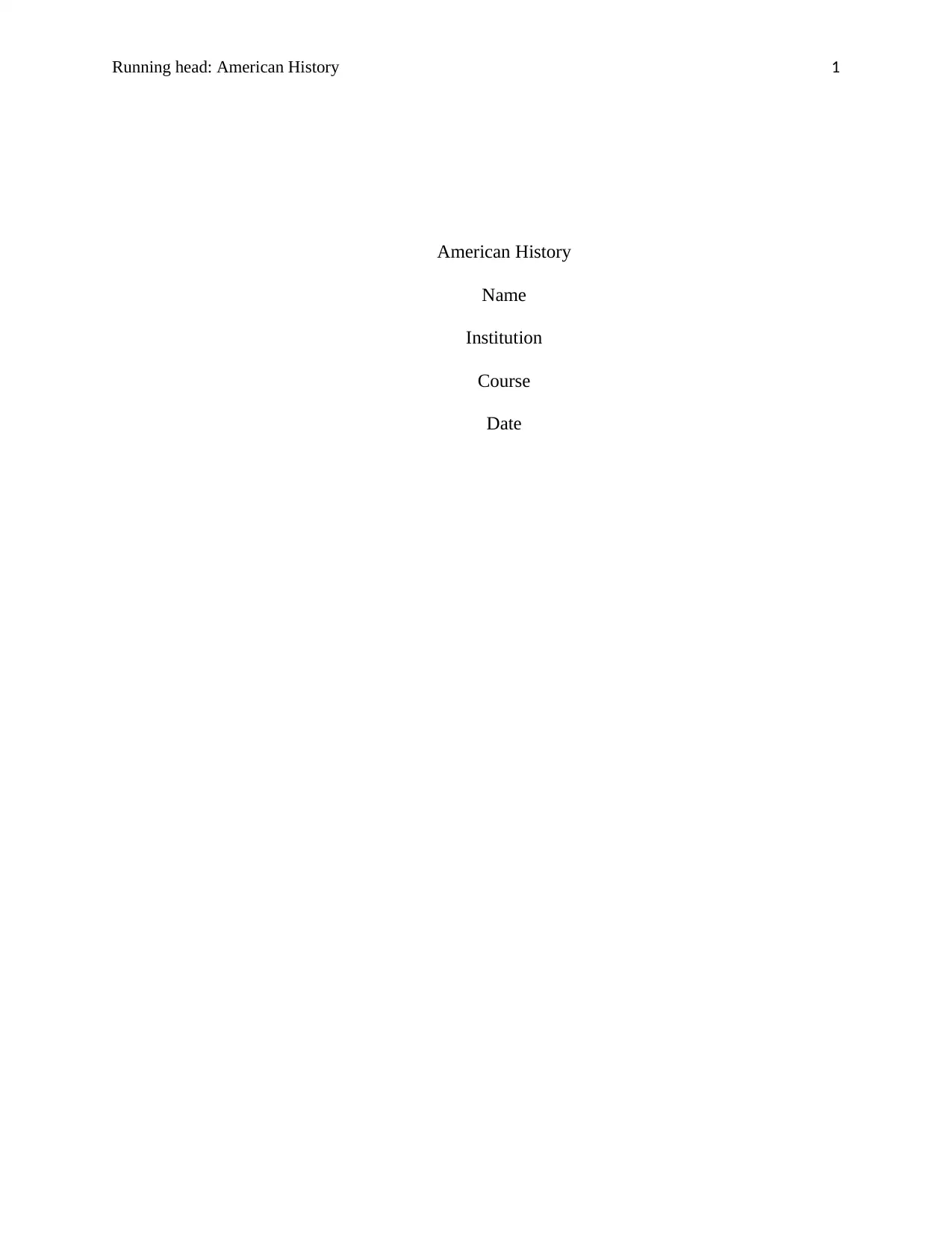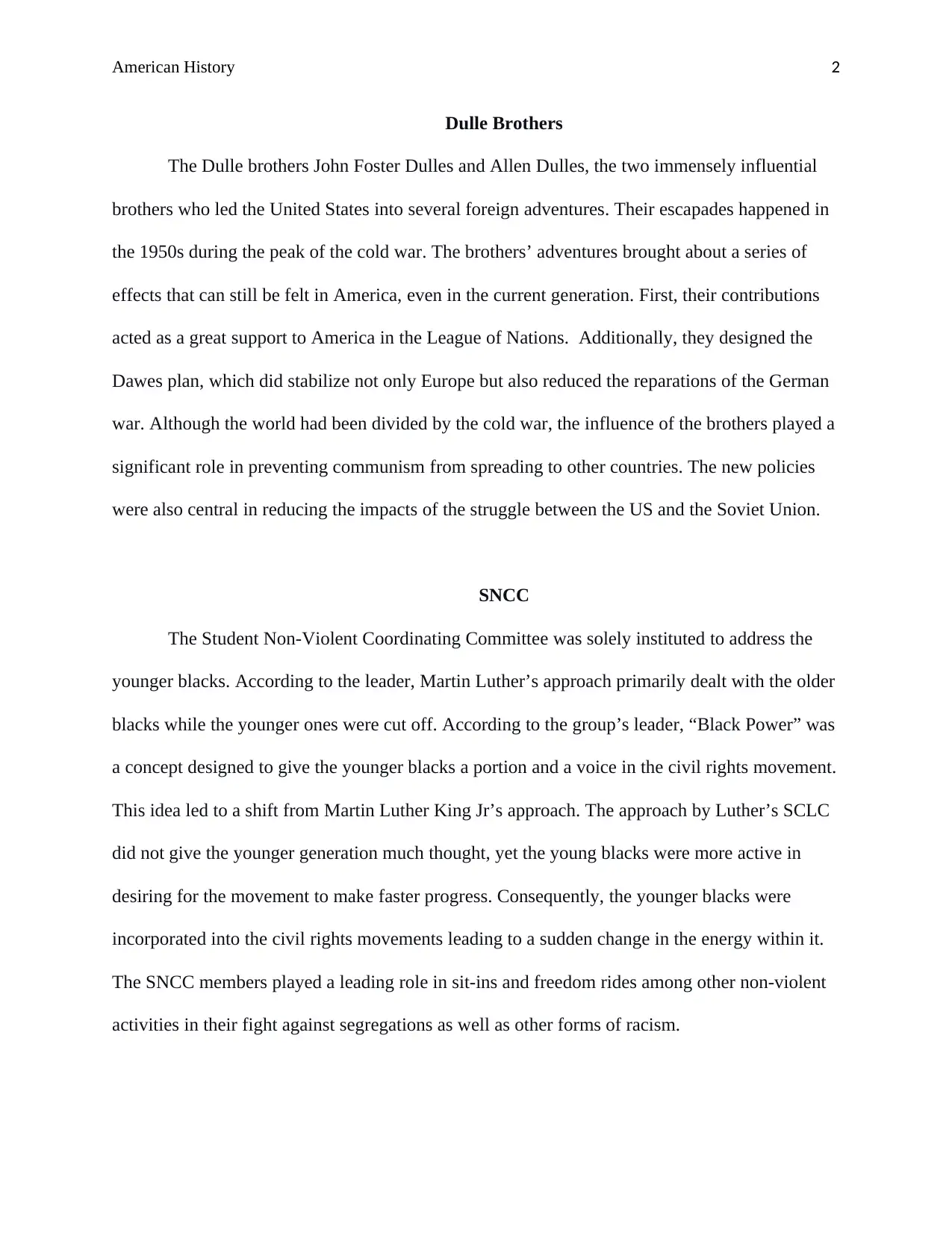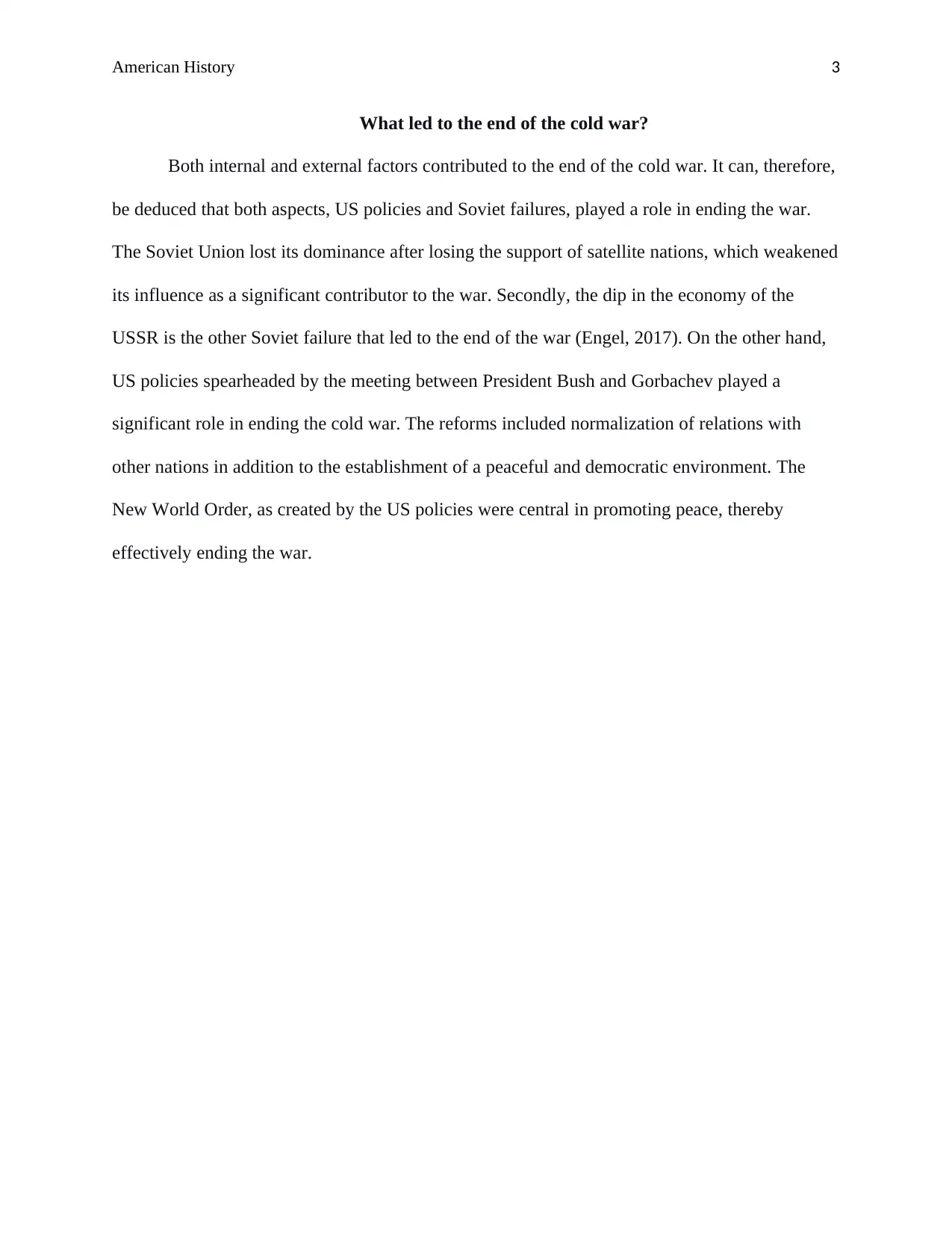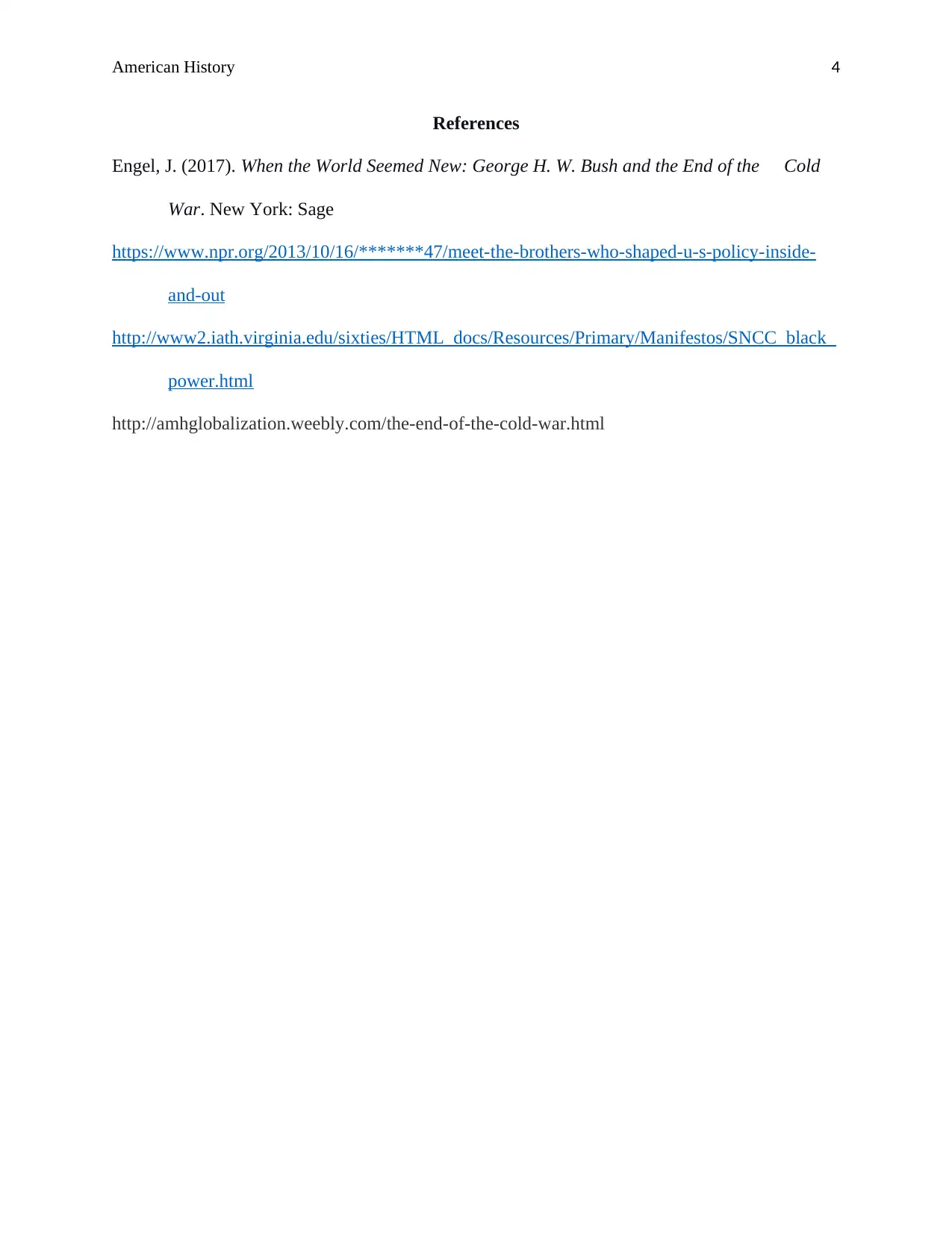American History Report: The Cold War, Civil Rights, and US Policies
VerifiedAdded on 2022/08/02
|4
|566
|13
Report
AI Summary
This report delves into significant events and figures in American history, focusing on the Cold War, the Civil Rights Movement, and the impact of US policies. It examines the roles of the Dulle brothers in shaping foreign policy during the Cold War, highlighting their influence on the League of Nations and the Dawes Plan. The report also explores the rise of the Student Non-Violent Coordinating Committee (SNCC) and its impact on the Civil Rights Movement, contrasting its approach with that of Martin Luther King Jr. Additionally, it analyzes the factors that led to the end of the Cold War, including both internal and external influences such as the decline of the Soviet Union and the role of US policies under President Bush. The report provides a comprehensive overview of these interconnected historical events, supported by references to relevant sources.
1 out of 4










![[object Object]](/_next/static/media/star-bottom.7253800d.svg)